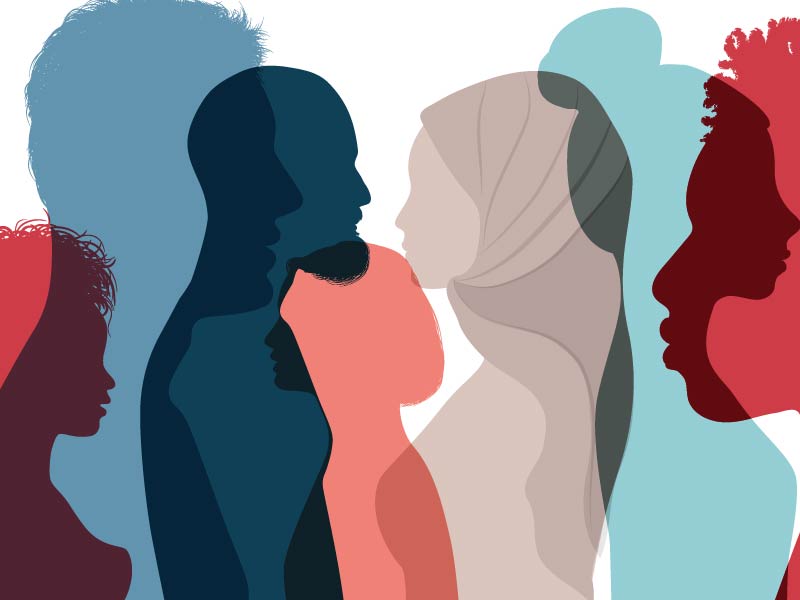Celeb Shot
The Great Reconnection: How to Build Human Connection in a Hybrid Workforce
Workplace belonging expert Adam Smiley Poswolsky shares why human connection is the best investment in productivity you can make—and provides practical tips for organizations to create a culture of connection in a lonely, hybrid world.

As the boundaries between work and home have blurred in the wake of the pandemic, workplace connection has withered. With more companies adopting work-from-home and hybrid work policies, the average workday has increased more than 13% (that’s nearly an extra hour of work per day), and after-hours work has grown 28%. Facing wall-to-wall Zoom meetings, endless emails, and 24/7 Slack messages, employees do not have time to take care of themselves or each other. People are spending less time with their friends, and more time alone, than ever before. Only 20% of employees are engaged, the lowest level of employee engagement ever recorded.
As the loneliness epidemic worsens and the future of work becomes more and more dependent on remote work technologies, I believe that we have entered a new era where a company’s ability to create human connection is their greatest predictor of success. Here are three key shifts companies and organizations can make to become a leader of the Great Reconnection and foster meaningful human connection in a hybrid workforce.
Shift #1: From a Hybrid Policy to a Hybrid Purpose
Hybrid work is not how many days you’re in the office, it’s what you’re doing when you’re together.
If we learned anything from the past three years, it’s that we’re not going back to the way things were before the pandemic. The vast majority of employees prefer working from home at least some of the time (2-3 days is the most popular), and the majority of companies say they plan on continuing to have a hybrid work policy moving forward. However, too much of the conversation on hybrid work focuses on the what; what days employees are working in the office and what days they are working from home. The more important question is why; why are people coming in the first place? All too often employees are being dragged into the office at 8am on a Monday morning, only to find that the rest of their team (including their manager!) decided to work from home. Or, they come into the office and find everyone on their team on Zoom calls all day long, with noise-cancelling headphones on, leaving them to wonder, “Why did I just sit in traffic for 45 minutes?!”
It’s time to move beyond a hybrid work policy, which is all about how many days your team is in the office, to a hybrid work purpose, which is all about what folks are doing when they get together, how they are staying connected while working remotely, and learning what everyone needs to thrive.
According to Microsoft’s most recent Workplace Trend Index, which surveyed 20,000 workers in 11 countries, 73% of employees say they need a better reason to go into the office than just company expectations. 40% of hybrid employees say their biggest challenge is knowing when and why to come into the office, and 85% of employees would be motivated to come into the office if they could socialize with co-workers or rebuild team bonds. Moreover, 80% of Gen-Z and Millennial employees are looking to connect in-person with senior leadership and their managers. These younger employees know what they are missing when it comes to mentorship, learning, and access to personal and professional growth opportunities by not being around other people.
In other words, people don’t come into the office for the work, they come in for each other. They come for the connection. Ask your team what they want to get out of their in-person time together, what works best for them in terms of frequency of virtual check-ins, and how they want to be supported throughout the week. Based on this information, come up with a team plan with expectations for when you’ll be collaborating all together in the office, when you’ll be working asynchronously at home, and what support everyone needs to do their best work.
Shift #2: From Annual Connection Time to Connection All the Time
Connection is the best investment in productivity you can make.
Microsoft recently found that a positive culture is the most important thing employees are looking right now for beyond pay, which makes sense given the challenging economic and emotional landscape. In a hybrid workforce, bringing your employees together for an annual or biannual offsite or team building retreat is essential, but it’s not enough to foster a culture of connection throughout the year. Instead, build connection rituals and habits into every stage of the employee experience.
Examples might include: giving new employees an onboarding buddy, ongoing trainings offered in-person and virtually, employee-led lunch and learns, peer coaching programs, mentorship opportunities, starting meetings with a personal check-in, trying one new thing every meeting (like allowing remote employees to share first or changing facilitators), creating intergenerational co-leadership initiatives that match early career talent with more experienced colleagues, scheduling office hours, weekly 1-on-1s, small win parties, works-in-progress sessions where people share unfinished projects, dedicating a Slack channel or Teams chat for giving praise and shoutouts, chat channels for various affinity groups, investing in employee resource groups, having transparency and accountability sessions around DEI initiatives, regular all-hands meetings, Q&As with senior staff, well-being breaks, and offering interactive and playful team building activities that focus on friendship and relationship building.
When a manager says, “We don’t have time for connection activities. We have too much to get done,” push back. Connection is the best investment in productivity you can make. Research by Gallup has shown that employees who have a best friend at work are seven times more engaged with their job, are better at engaging customers, produce higher quality work, have a higher well-being, and are less likely to get injured on the job. Employees without a close friend at work have just a 1 in 12 chance of being engaged, and people with close relationships with their co-workers are 10 points less lonely on the UCLA Loneliness Scale.
Simply put, investing in workplace connection and belonging is good for well-being—and good for business. According to data from BetterUp, employees who experience high-levels of belonging have a 56% increase in job performance, a 50% drop in turnover risk, a 75% reduction in sick days, and a 167% increase in employer promoter score. These benefits result in an annual savings of $52 million for a large company.
Shift #3: From “Talk to HR” to Belonging is Everyone’s Job
In a hybrid world, belonging is everyone’s job, regardless of their job title.
For too long we’ve had the mindset that belonging at work is something HR is responsible for. When employees say they feel overwhelmed, stressed, or under-appreciated, too many managers respond with, “Not my problem, go talk to HR.” In a hybrid workplace, belonging is everyone’s job. Yes, HR and DEI leaders set the tone and often carry much of the load. But everyone is part of shaping and evolving an organization’s culture, regardless of their title, and regardless of whether they’ve worked with us for twenty years, two years, or two weeks. Creating a culture of connection starts with psychological safety, what Amy Edmonson, Novartis Professor of Leadership and Management at Harvard Business School, defines as team members feeling safe to take risks and be vulnerable in front of each other. To admit mistakes, to not know the answer, to go outside your comfort zone, to be curious and ask lots of questions.
When it comes to building The Great Reconnection, a great place to start is with gradually building vulnerability into your next team meeting or 1-on-1. A study called “The Experimental Generation of Interpersonal Closeness,” led by psychologist Dr. Arthur Aron at SUNY Stony Brook, found that, “One key pattern associated with the development of a close relationship among peers is sustained, escalating, reciprocal, personal self-disclosure.” Start small and keep the conversation going. Ask your team about something they recently learned from a family member or loved one, or something they are grateful for.
This doesn’t mean that everyone must share their deepest, darkest secrets at work. It also doesn’t mean that you must be best friends with every single person you work with. But it does mean that everyone deserves the opportunity to feel seen and celebrated at work. It does mean we need to create a culture of connection, care, and inclusion for all. It also means that a culture of connection doesn’t just happen. A culture of connection, where people can be themselves at work, share what’s on their mind and what they are struggling with (and receive support), requires intention, time, and extra effort—especially in a hybrid world.
If the future of work is hybrid, the future of work is also human connection. It’s time to work together to fight the loneliness epidemic and build the Great Reconnection.
Events aren’t easy, but working with WSB is. WSB works with thousands of respected influencers, thought leaders, and speakers each year and our experienced sales team is committed to the success of your event. For more corporate culture speaker ideas, please contact us.
